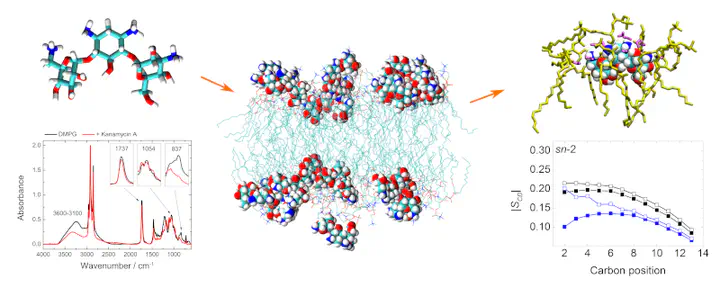 Graphical Abstract: Elsevier
Graphical Abstract: ElsevierAbstract
Biological membranes are natural barriers to the transport of molecules and drugs within human bodies. Many antibacterial agents need to cross these membranes to reach their target and elicit specific effects. Kanamycin A belongs to the family of aminoglycoside antibiotics that target cellular RNA to inhibit bacterial and viral replication. Previous studies have shown that aminoglycosides bind to mammalian but disrupt bacterial membranes. In this study, molecular dynamics (MD) simulations and infrared (IR) spectroscopy were applied to investigate the initial, first key interactions of kanamycin A, as a representative aminoglycoside, with both bacterial and mammalian lipid bilayers at the molecular level. Computational studies revealed strong hydrogen bonding interactions between the hydroxyl and amino groups of the aminoglycoside with the ester carbonyl and phosphate groups of the lipids. IR spectroscopy provided experimental verification of the important role of the lipid’s ester carbonyl, phosphate and hydroxyl groups for aminoglycoside binding. The bacterial membrane became disordered upon aminoglycoside addition, whereas the mammalian membrane became stiffer and more ordered. This indicates the bacterial membrane disruption observed by previous studies.